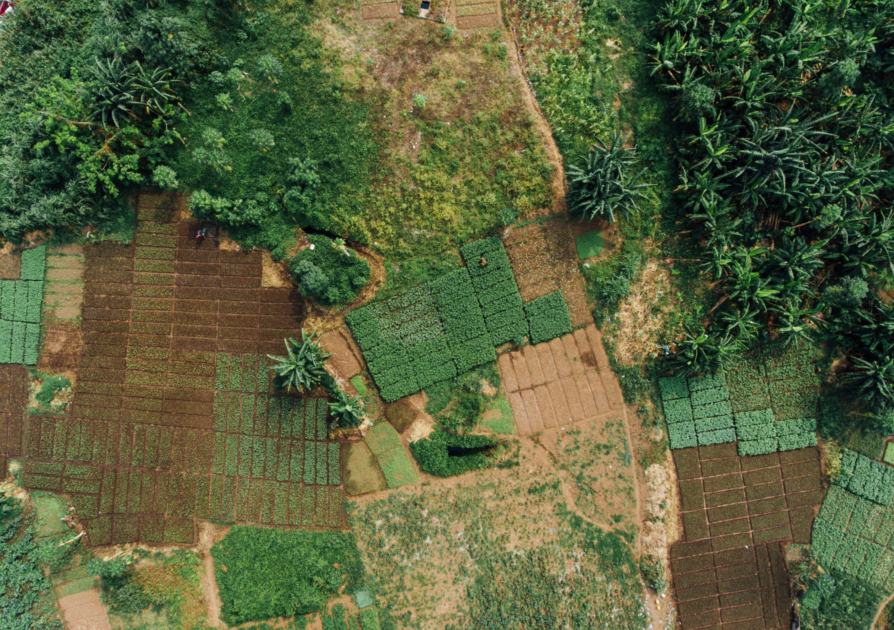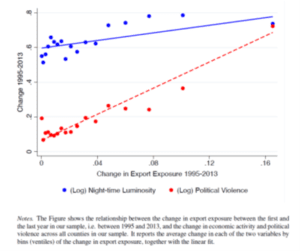#EconomicPolicy
#EconomicPolicy77
Contacts:
Michele Di Maio
Sapienza University of Rome
Tel: +39-3479601174
michele.dimaio@uniroma1.it
Trade liberalisation boosts both economic activity and political violence
Evidence from emerging countries
While agricultural trade liberalisation raises economic activity, it also triggers distributional conflict and increases political violence in emerging countries, according to new research by Francesco Amodio, Leonardo Baccini, Giorgio Chiovelli and Michele Di Maio. But political violence does not increase everywhere: the effects are larger in urban areas, in areas where production requires relatively few workers and in places where cultivated crops are mostly consumed locally.
The study examines the effects of all preferential trade agreements made between 25 low- and middle-income countries and their high-income trade partners during the period 1995-2013. The results imply that the overall level of economic activity would have been 2% lower, and political violence 7% lower, had the countries not signed any agreements of this kind.
The analysis highlights the importance for policy-makers of anticipating the distributional effects of trade liberalisation and complementing it with other policies that can address potentially destabilising imbalances. Ideally, these policies should target areas in which agricultural production is less labour-intensive and where the share of the urban population is sizeable.
Trade liberalisation creates winners and losers. In high-income countries, these distributional tensions have increased political polarisation. But little is known about these issues in low- and middle-income countries.
Contrary to the prediction of standard trade models, globalisation has not reduced inequality in emerging economies, where political institutions are typically fragile and the state is weak. This research shows that trade liberalisation triggers distributional conflict and increases political violence in emerging countries.
The authors study the effect of all preferential trade agreements (PTAs) signed between 25 low- and middle-income countries and their high-income trade partners during the period 1995-2013.
They focus on the agricultural sector and combine data on tariff cuts by crop with information on suitability to produce different crops. Elaborated by the Food and Agriculture Organization based on weather and soil characteristics, this information is available at very fine spatial resolution, making is possible to compare areas within countries that are more or less suitable to produce different crops before and after the implementation of each PTA.
Figure 1: Change in export exposure, economic activity and political violence
The study uses data on luminosity at night to measure economic activity, and geo-referenced information on political violence from media-based database of socio-political interactions.
Figure 1 summarises the results. It plots the average change in economic activity and political violence across all counties and countries in the sample (vertical axis) against exposure to trade liberalisation (horizontal axis) as determined by crop suitability and salience of agricultural tariff cuts.
Figure 1 shows that trade liberalisation increases both economic activity and political violence. The authors’ estimates imply that the overall level of economic activity would have been 2% lower, and political violence 7% lower, had the countries in the sample not signed any PTAs.
Importantly, political violence does not increase everywhere. The effects are larger in urban areas, in areas in which production is low-labour intensive (that is, production requires relatively few workers), and where cultivated crops – whose prices increase because of trade liberalisation – are also (mostly) consumed locally.
The authors interpret this evidence as indicating that, when workers and consumers do not share the gains from trade, agricultural trade liberalisation can exacerbate distributional conflict, and that these effects are more likely to materialise in urban areas.
These results have important policy implications. The study demonstrates how (agricultural) trade liberalisation is both a boon and a curse for low- and middle-income countries: it brings about economic growth, but the uneven distribution of the gains from trade can increase political instability and violence. As such, the analysis highlights the importance for policy-makers of anticipating the distributional effects of trade liberalisation and complementing it with other policies that can address potentially destabilising imbalances.
The findings suggest that these policies should target areas in which agricultural production is less labour-intensive and the share of the urban population is sizeable. Indeed, these are locations in which, on the one hand, the positive effects on agricultural economic activity are less likely to be accompanied by an increase in employment and, on the other hand, real income is likely to fall because of the effect of trade liberalisation on crop prices.
Trade Liberalization, Economic Activity, and Political Violence in the Global South: Evidence from PTAs
Authors:
Francesco Amodio (Mcgill University & Universitat Pompeu Fabra)
Leonardo Baccini (McGill University)
Giorgio Chiovelli (Universidad de Montevideo)
Michele Di Maio (Sapienza University of Rome)









